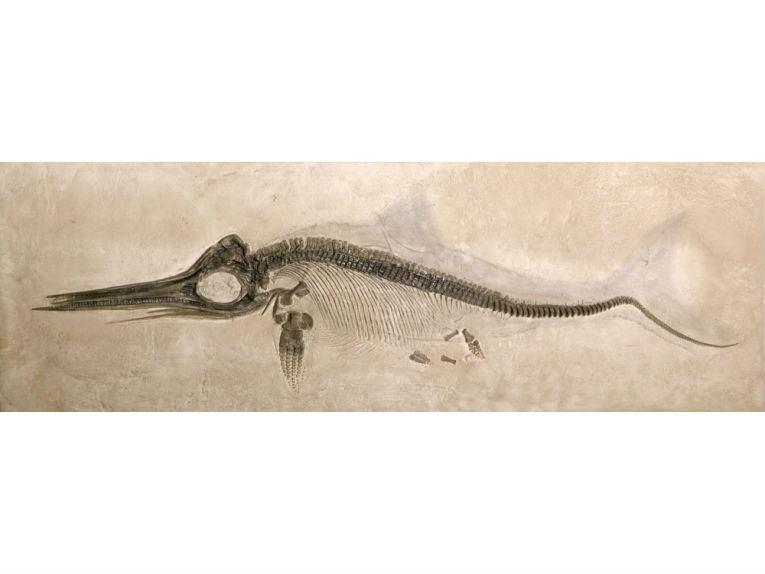Valentin Fischer of the University of Liege, with Michael W. Maisch and several others, including Darren Naisch of the School of Earth Sciences at Southampton University, have illuminated the dark recesses of ichthyosaur biology with the unveiling of a new species, having great bearing on the rise and fall of the group. Along with other animals such as ammonites, crocodiles and plesiosaurs, these marine animals seemed to lose out when the Jurassic gave way to the Cretaceous period 145.5 million years ago.
This divide between the two era is called the JCB (Jurassic/Cretaceous boundary). New European finds of plesiosaurs in North Yorkshire and Lower Saxony have caused the authors to name Acamptonectes densus as a new genus and species related to the Ophthalmosaurid group, found in the USA and in England. Since 2003, the number of Cretaceous ichthyosaurs known to science has risen above those known from the Jurassic.
The two branches of these reptiles successfully persisted through the Cretaceous, adding to the growing evidence that ichthyosaurs were relatively unaffected by the late Jurassic extinctions that befell marine groups. At best, research now points to any such extinctions at the JCB as being poorly understood. Certainly, both of the major branches of the ichthyosaurs persisted. The "fish-lizards" (what an awfully inefficient description that was!) ultimately became extinct 90 million years ago, in the late Cretaceous.
And what on earth has all the fossil hunting to do with reality? We live now with accurate fossil dating of human and other evolutions, giving strong hints about cataclysmic disaster that often affects the whole planet. These events include, of course, huge meteor strikes, the largest being the 170km 2 Yucatan crater from 65.5million years ago*. Many events from our ancient history, not the more recent flaccid kings and aggressive wars, can educate our successors about their fate. If we can do that, using fossils like these as our indicators, and the tools of interplanetary sciences, they could be the only form of life to survive their projected demise At least the ichthyosaur has now managed an extra 50 million years:
CAMBRIAN BEGINS
542mya Major groups of animals appear on earth
443mya MASS EXTINCTION
374mya MASS EXTINCTION over 20m years
251mya MASS EXTINCTION(greatest known)
Doubted 480 km2 crater in Antarctica
214mya METEOR (QUEBEC) 100km2 crater
201mya MASS EXTINCTION
JURASSIC BEGINS
167mya METEOR(PUCHEZH-KATUNKI, RUSSIA) 80km2 crater
145mya METEOR(S.AFRICA) 70km2 crater
CRETACEOUS BEGINS (JCB)
133mya METEOR (AUSTRALIA) 55km2 crater
70 mya METEOR (KARA, RUSSIA) 65km2 crater
65.5mya THE HUGE YUCATAN METEOR* + MASS EXTINCTION [And the next meteor?]










